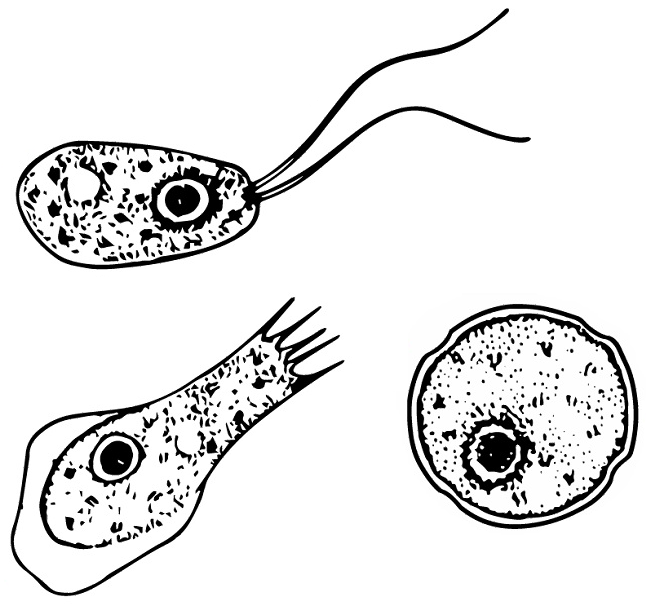| Lyromonas | |
|---|---|
| Scientific classification | |
| Domain: | |
| (unranked): | |
| Phylum: | |
| Class: | |
| Genus: | Lyromonas |
Lyromonas is a genus of Excavata unicellular organism.

Excavata is a major supergroup of unicellular organisms belonging to the domain Eukaryota. Introduced by Thomas Cavalier-Smith in 2002 as a new phylogenetic category, it contains a variety of free-living and symbiotic forms, and also includes some important parasites of humans, including Giardia and Trichomonas. Excavates were formerly considered to be included in the now obsolete Protista kingdom. They are classified based on their flagellar structures, and they are considered to be the most basal Flagellate lineage. Except for Euglenozoa, they are all non-photosynthetic.

A unicellular organism, also known as a single-celled organism, is an organism that consists of only one cell, unlike a multicellular organism that consists of more than one cell. Unicellular organisms fall into two general categories: prokaryotic organisms and eukaryotic organisms. Prokaryotes include bacteria and archaea. Many eukaryotes are multicellular, but the group includes the protozoa, unicellular algae, and unicellular fungi. Unicellular organisms are thought to be the oldest form of life, with early protocells possibly emerging 3.8–4 billion years ago.
It has one known species, psalteriomonas vulgaris. [1]
